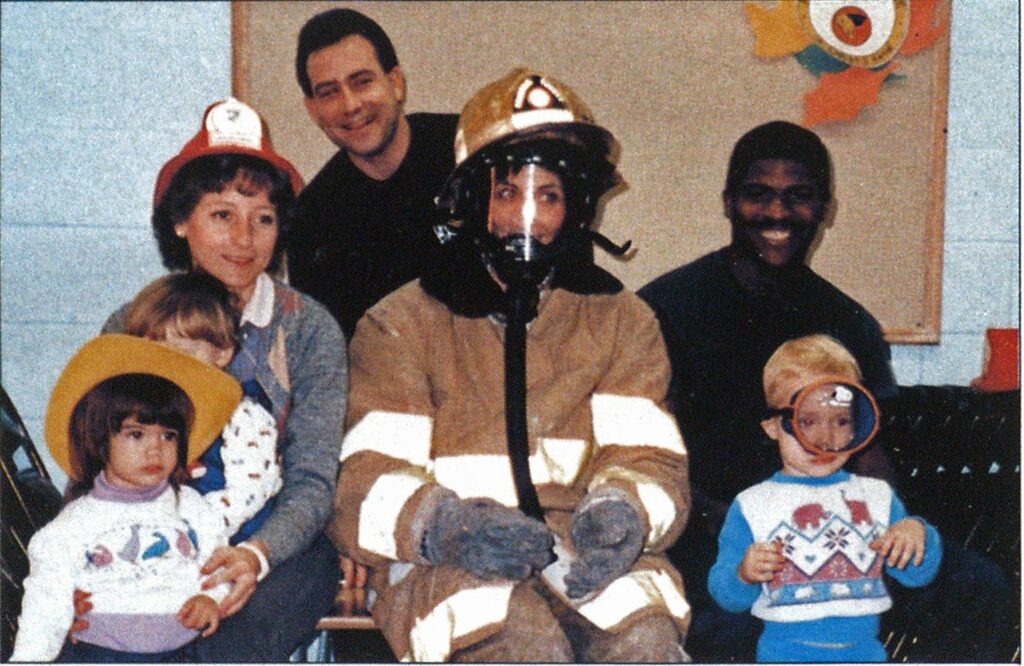
Child’s-Eye View
PUBLIC EDUCATION
You don’t have to have a degree in child psychology to teach kids.
A lot of fire service members become needlessly intimidated when they read articles about teaching fire safety to youngsters. “I can’t do that,” they think.
But communicating with children is a matter of a little empathy and a few practical approaches, such as those the Fairfax County (Va.) Fire and Rescue Department teaches its firefighters.
Recognizing that station personnel are frequently asked to make informational presentations to various community groups, the department embarked on a program to train all field personnel in basic educational methodology and simple communications skills. The program clues firefighters in on how to analyze the needs of the community, select the best teacher for a program, choose the appropriate format and supporting materials for the subject, and communicate with different types of audiences.

For applying these decisions to a young audience, there are several principles to keep in mind.
First, up until the age of 9 or 10, children haven’t yet developed much sense of responsibility. They’re me-oriented. A young child can watch a neighbor’s house burning without feeling disturbed by it, since the event may not affect the child directly. Teaching should play on a child’s interest in herself.
Second, kids are curious, but they have a short attention span. Keep the presentation lively and interactive. Any audience benefits from getting involved in the program, and children are no exception. They’re usually eager to assist with demonstrations.
Keep it simple, too, because kids have a limited vocabulary. It’s not necessary, for example, to explain the difference between a truck and an engine. To kids, all apparatus are “fire trucks.”
Very young children may be frightened, or at least hesitant, around strangers. Get down to their level to show and tell.
When you see the subject the way your young audience does, teaching fire safety is kids’ stuff.

Fairfax firefighters are taught to combine five types of teaching tools into their presentations:
- Experience-based discussions. You can build a point around a story a child in the class may tell about an experience he’s had or around your own experience. This draws a young audience into the lesson because it involves something real that its members know of or can relate to.
- Case studies. Whether from printed fire education materials or news media coverage of a local fire, case studies again provide kids with concrete examples. You can have the children talk about ways they could react safely in a similar situation.
- Preand post-testing. By asking a few questions—5 to 20, depending on the age group—you draw your audience into the material. Asking questions before you get into the meat of the presentation will help focus the kids’ attention on learning the answers; asking them again at the end of the presentation reinforces what the kids have just learned. Examples: What do you do if your clothes catch on fire? How many smoke detectors should you have in your house?
- Role-playing and games. Children learn a lot from play. Incorporating fire safety information into a game makes the material more accessible and creates associations that help students remember it when the need arises.
- Future-based statements. Imagination is an important part of a child’s mental activity. Asking for predictions on a question such as What will firefighting equipment look like in 1990? encourages kids to visualize and discuss what happens in a fire, as well as how it can be prevented.
Helping children to understand firefighting gear of the here and now is important, too. You can show what the firefighter who’s come to help looks like in a fire, but for very young children, it can be a little scary. It’s best that the classroom teacher—as someone familiar to them—dress up in the turnout gear and self-contained breathing apparatus.
Keep that in mind the next time you think you might be intimidated by the idea of facing a class of children. You and the kids are in the same boat, but you have their eagerness and curiosity on your side. With a little adult preparation, you can deliver a message that might save a life.

